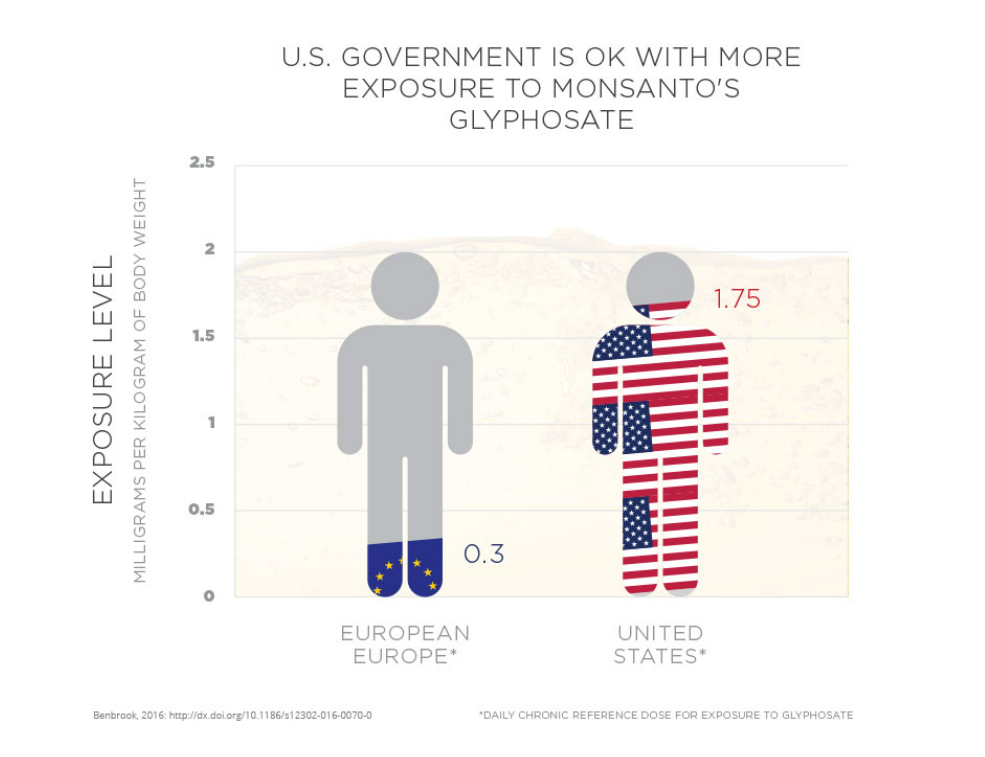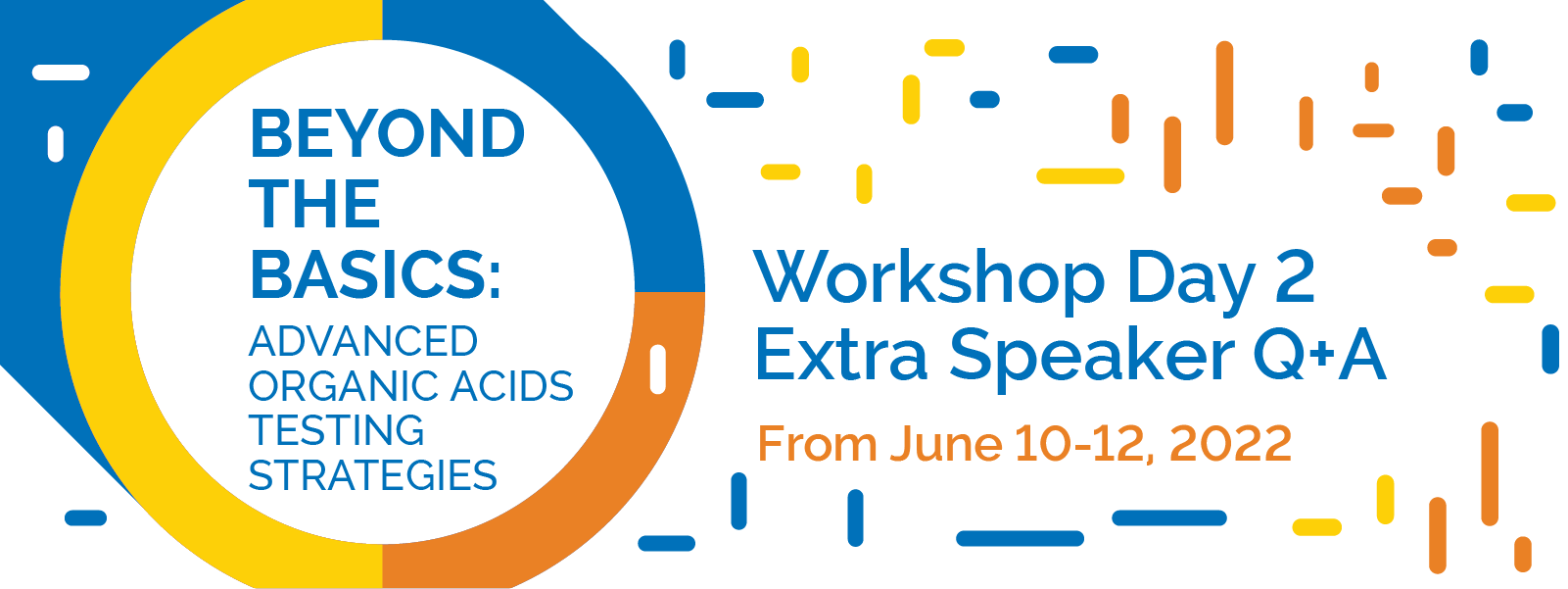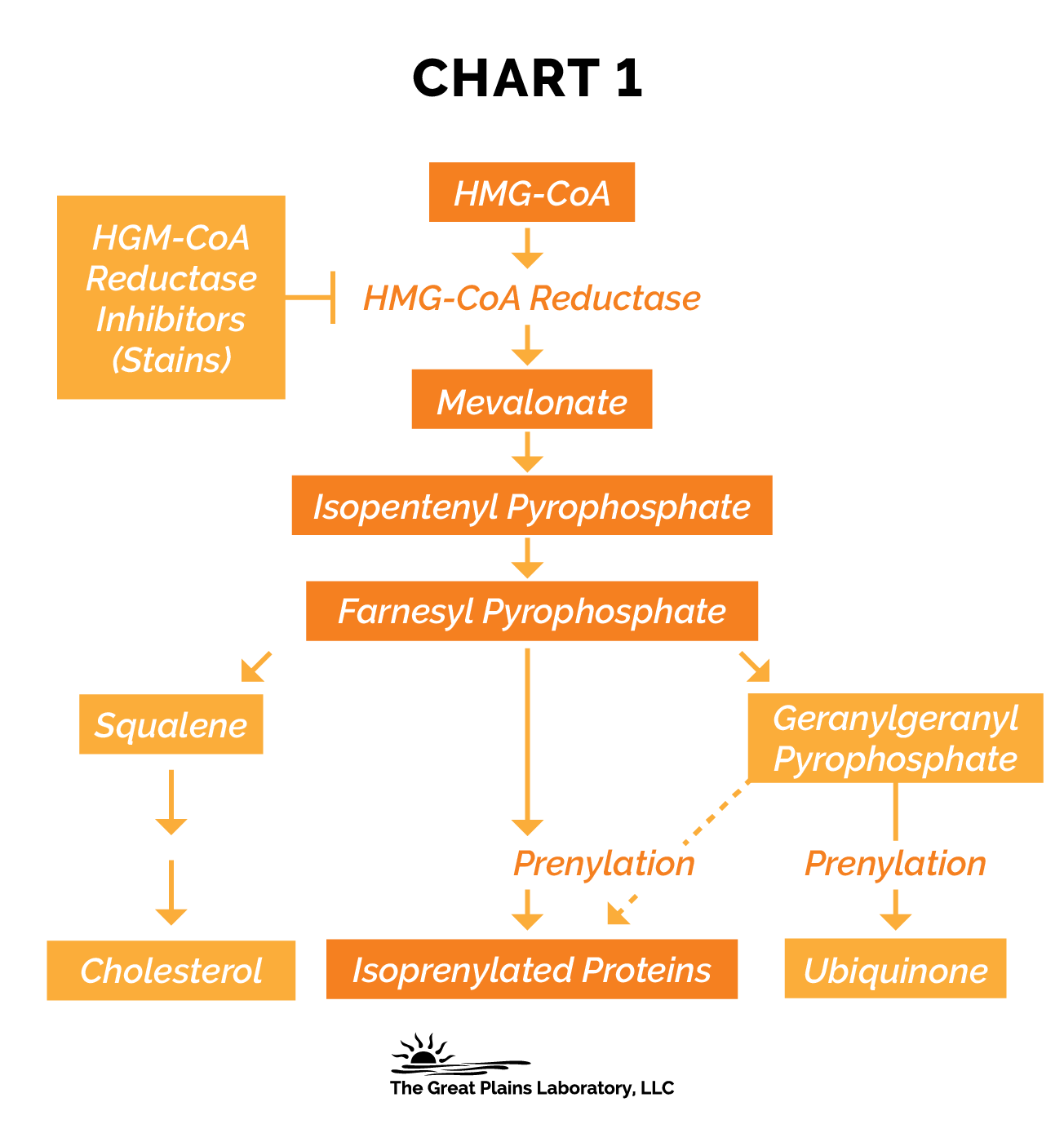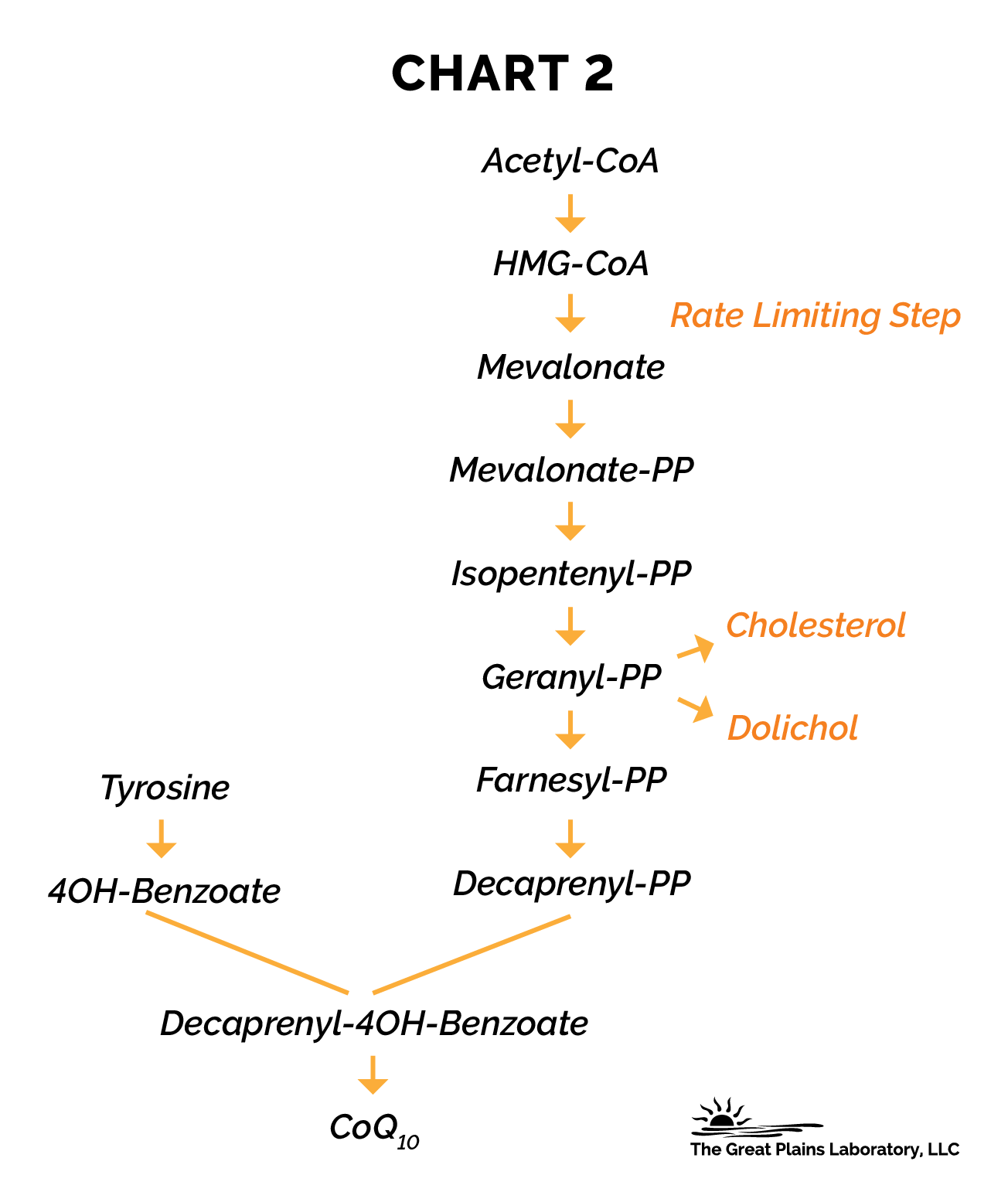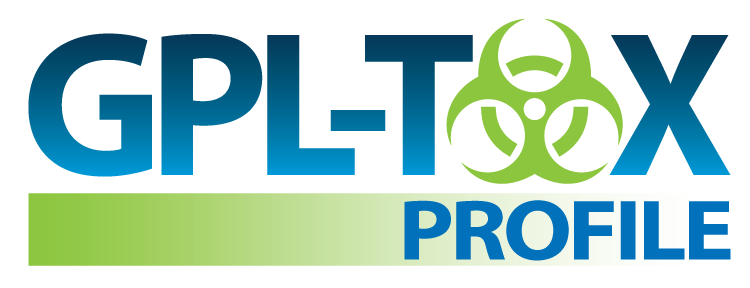Environmental Toxins and Prenatal Care | Joseph Pizzorno, ND
Q: How do you approach patients with abnormally low GGT who may have difficulty recycling glutathione?
A: Very good question! And one I have been thinking about and have not figured out a good answer. At this time, I recommend topical or liposomal glutathione.
Q: What are some safe brands for cooking pans?
A: I have not independently evaluated specific brands so can’t make an informed recommendation. We use the new ceramic cooking ware. Appears to not leak toxins and is reasonably easy to clean.
Q: How long do you need to eat organic/limit exposure to see a change in blood work or on other toxin screening tests? / How long would you wait until retesting?
A: Remarkably, blood and urine pesticide levels drop dramatically—75-90%--after just 4 days of eating organically. The problem, of course, is that most are fat-soluble, so they accumulate in the fat. Since blood and urine change so quickly, I recommend testing 2 weeks after the patient tells you they have been eating organically.
Q: If I wanted to grow my own organic garden, where do you get seeds? Are the seeds in a typical store organic?
A: Happy to report there are a lot of good sources! I prefer the seeds to be both organic and heirloom. I like most of the food produced by the seeds I get from Uprising Seeds in Bellingham, WA.
Q: What natural sequent do you recommend?
A: All food-sourced fibers. Unfortunately, very little objective research. The little that is available is mostly wheat and rice fibers. Considering that most people react adversely to wheat, I suggest rice. And yes, good idea if you can get the manufacturer to document arsenic free.
Q: How does exercise with sweating compare with sauna for excreting toxins? Do you recommend red sauna or the blankets?
A: I asked the great researcher Steven Genuis, MD this question. His response is that it doesn’t matter. All that matters is the sweating.
Q: Is NAC ok for pregnant women?
A: I believe <1,001 data-preserve-html-node="true" data-preserve-html-node="true" mg/d should be safe for everyone. The only reactions I have seen are in a very small percentage of people who have a sulfur metabolism problem. Watch for IBS, acid reflux and/or allergies as an indication of sulfur overload.
Q: I'm working in community that has several paper mills. What toxic burden does that present to the people?
A: Highly dependent upon the source of the materials used. Unfortunately, trees will incorporate toxins they are exposed to. For example, if grown in an area with mercury contamination, the trees will be high in mercury which is released if there is a forest fire. The only way to be sure is to go to the US Geological Service website (www.usgs.gov). they’ve a large number of maps by county of the many toxins in the environment. Also, the Environmental Working Group has a website where a Zip Code can be entered to determine the toxins in the area.
Q: What is the half-life of PBDEs? How can we get them out of the house/off the floor?
A: I have not been able to get a good answer on this. Appears to be months, but I am not sure. The research does show that the more brominated the PBDE the longer the half-life.
Q: Do you have a resource on the half-lives of specific toxins? Thanks
A: I found a great paper that has many of them, but not all. Also includes a lot of drugs. Therapeutic (“normal”), toxic, and comatose-fatal blood-plasma concentrations (mg/L) in man. 150 pages and almost 1,000 references. Very useful.
Q: What is the most reliable test for metals if you cannot do provocation before testing?
A: Depends upon the toxin (lead—blood, cadmium—urine, arsenic—urine, mercury—urine.). But must recognize the “safe” standards are way too high. Urines should all be first morning.
Q: Dr. P, What about a low GGT? Does this mean liver needs more support?
A: They likely need glutathione. Measure their RBC glutathione.
Q: Doesn’t ggt also assess gallbladder function? In the ICU, we used to check ggt when we suspected gallbladder disease, which makes sense that it’s elevated when they are not detoxing well d/t gallbladder disease...
A: Yes, there are several causes of elevated GGT. Need to determine the full context.
Q: Is GGTP the same lab test as GGT?
A: Yes. The same test but labs use both abbreviations.
Q: Can you repeat the name of Doc in Northern CA who follows the GGTP?
A: Alan Goldhamer, DC measures GGTP in his fasting clinic.
Q: Does 8-ohdg also measure damage from mitochondrial dan?
A: Good question! And one I have wondered about. 8-OHdG has been used for both nuclear and mitochondrial DNA damage but I have not been able to quantify the differences. We do know that mitochondrial DNA suffers a lot more damage and does not have the repair mechanisms of nuclear DNA. So, I would not be surprised if the urinary markers are dominated by mitochondrial damage markers.
Q: Do you think the Big Berkey water filter is enough? Or what about distilled water, with adding minerals?
A: I do not at this time have enough data to compare manufacturers. Distilling water and adding minerals is a good strategy.
Q: Do you think fiber in food is enough, or do you recommend fiber powder?
A: Hard to get enough fiber from diet unless eating primarily vegetarian and primarily high fiber foods. Supplemental fiber seems a good idea to me.
Q: A great resource for parents is Lead Safe Mama website https://tamararubin.com/ information on lead in children's toys, dishes, etc.
A: Great! Thanks for sharing.
Q: How long should a gal wait to get pregnant following removal of amalgams by an environmental dentist?
A: Assuming active efforts to avoid all other mercury sources and active facilitation of excretion, 6 months will get rid of most of the mercury.
Q: Can you comment on what pollutants we should be concerned with near a landfill in US?
A: Not being facetious — all of them.
Q: What key lab tests should a woman who has had 3 miscarriages in the first trimester have done before getting as part of her prenatal and fertility care?
A: Homocysteine, methylmalonic acid, GGTP, 8-OHdG, blood lead, and urinary mercury.
Q: How do you filter outside air? Isn’t that where your furnace and AC gets the air?
A: Depends upon the installation. The furnace typically recirculates the air of the house and has a separate intake to bring in outside air for the burning. Opening a window lets in outside air. If heavily polluted area, then should consider clearing outside air before it enters the house.
Q: Please tell us some of the toxin-absorbing plant names?
A: Moss case, Pot mum, Gerber daisy, Warneckii, and Ficus.
Q: With use of plants do you increase exposure to soil spores?
A: Probably, likely.
Q: What do you do when people are non-sweaters?
A: More fiber and glutathione.
Q: Does sweating from exercise and/or hot tub excrete these toxins as well?
A: Yes. Note that hot tubs and steam baths recirculate toxins unless removed by a filter.
Q: I have patients who barely sweat, they go in sauna and don't sweat until have been in there for at least an hour...thoughts on this?
A: Trickly. I can’t recommend specific protocols without knowing more about the patient.
Q: Do you have a recommendation for trace mineral supplementation?
A: Eat organically grown foods. No specific supplement recommendations.
Q: Do you recommend drinking alkaline water while in the sauna?
A: Theoretically, yes. But I’ve no research. The sauna drink I make for myself is slightly alkaline.
Q: Are saunas safe for kids? what age and time limit?
A: Yes, and a bigger question than can be answered here.
Q: What are your thoughts/recommendations for those that don't tolerate sauna (or even hot showers/baths) without feeling ill?
A: Primarily Red face, elevated heart rate and dizziness. Is it possibly related to histamine intolerance? This question has come up a lot. I will give it more thought.
Q: Is there an optimal reference range for GGTP?
A: My best estimate at this time is 15-20.
Q: How toxic is weed/cannabis these days? I got a feeling it's loaded with metals and chemicals with cadmium leading the way. Does excess weed-smoking keep the copper/Dopamine high?
A: Acetaldehyde, ammonia arsenic, benzene, cadmium, chromium, formaldehyde, hydrogen cyanide, isoprene, lead, mercury, nickel, and quinoline are common in cannabis. Those who exclusively smoked marijuana had higher blood and urine levels of several smoke-related toxic chemicals such as naphthalene, acrylamide, and acrylonitrile metabolites than non-smokers. Metabolites of the last 2 chemicals are tested in the GPL-TOX test.
Q: Does your lab offer any tests for toxicities of chronic Lyme disease?
A: No.
Q: Do touch screens on electronics increase risk of exposure to chemicals?
A: Triphenyl phosphate is a significant hazard on computer screens, touched or not.
Q: Which brand of household cleaners would you recommend?
A: Don’t have one.
Q: Any suggestions on best ways to detox patients who are getting significant number of IVs? Or for anyone getting IVs - should they be taking binders for a particular amount of time before/after? any suggested protocols to detox the plastics?
A: Plastic IVs are all potentially hazardous. Request glass containers instead. Sauna is the best treatment.
Q: 1-bromopropane could be used for foam gluing. Is foam mattress and foam pillows for sleep also big source of? Are older foams better or worse?
A: Good question but don’t know.
Q: Dr. Shaw mentioned that glutathione will detox many toxins. If we start a patient in which we suspect a heavy toxic load on glutathione, are we in danger of seeing a large enough dump to see a severe herx reaction?
A: Most glutathione adducts are less toxic than the original toxic chemical not attached to glutathione. There are exceptions so there could be an occasional toxic reaction. Since there are tens of thousands of toxic chemicals there is no comprehensive source of this information.
Q: How does urine neurotransmitters rate to brain levels? Do they correlate?
A: Urine neurotransmitters correlate to brain levels since the same enzymes are present in both central and peripheral nervous systems for dopamine, epinephrine, and norepinephrine.
Q: Dr Shaw which supplements. do you take?
A: CDP choline, lithium, vitamin C, B6, methyl folate, methyl cobalamin, carnitine, biotin, Vitamins A, D, and K.
Q: What brand of air filter system do you use in your home?
A: None right now.
Q: What other techniques other than supplements and air filtration do you do to keep your toxins low?
A: The main thing is organic food and reverse osmosis water.
Q: Any suggested brands of sauna? Red sauna or blanket?
A: The only sauna not recommended are those made of pine which off-gas terpenes when heated.
Q: Will water distillers remove the vinyl chloride from the PVC in nearly everyone's home and workplace?
A: Reverse osmosis systems are the only systems that remove almost all chemicals.
Q: When you mention acrylic fibers being carcinogenic-does that include clothing-so much is made from acrylic?
A: Yes, if the person is exercising, the chemicals may off-gas and enter the skin.
Q: I am now wondering how many crafters who are big into the yarn arts are at risk, since there are many yarns that contain acrylic. It would be difficult to do yarn arts wearing gloves. Any advice?
A: Acrylics and other synthetic fabrics would be most toxic when wearing them while hot so they might off-gas.
Q: Can people with a sulfur allergy take glutathione?
A: A sulfur allergy would have to be defined. Virtually no one except industrial chemists are exposed to pure elemental sulfur. Two sulfur-containing amino acids found in almost every protein are cysteine and methionine. Virtually every normal person has high amounts of sulfur containing glutathione. I don’t think someone who is severely allergic to these amino acids could be alive. Some people mean they are sensitive to sulfur containing antibiotics. I seriously doubt that anyone is allergic to glutathione since it is present in virtually every cell in the body. If unsure, put a drop on the skin and see what happens.
Q: Is there an exhaustive list of where each of the environmental toxins are found? if so, where? i.e., work exposure with certain chemicals....
A: The Great Plains website is a good place to star. In this brochure, pages 10-15 are fairly good sources.
Q: Did any ALS patients who you highlighted in the lecture improve with removing exposure, sauna and NAC/Glutathione treatments?
A: Haven’t had time for follow-up. Biggest impediment is that family members consider ALS incurable so don’t want to treat.
Q: Many students are now using iPads that you can write on. Do you feel that the coating on the screen is being absorbed into the hands while writing or is the risk more with inhalation from off gassing?
A: Don’t know.
Q: Are latex gloves without powder toxic?
A: The latex allergy is to the gloves themselves not the powder.
Q: Are you of the opinion that glyphosate is one of the main causes of the rise in autoimmunity, due to alterations in protective microbiome? It's been sprayed on wheat/oats for 25 years and gluten is proven autoimmunity trigger.
A: Yes. Many articles on this. Wu HJ, Wu E. The role of gut microbiota in immune homeostasis and autoimmunity. Gut Microbes. 2012;3(1):4-14. doi:10.4161/gmic.19320
Q: Thoughts on the use of fermented foods such as sauerkraut packaged in plastic?
A: Plastic packaging is a big problem for all foods.
Q: A lot of people get Culligan water delivered to their home in big plastic jugs.... would it be better for them not to do this?
A: I am one of these people and need to ask what type of plastic is being used.
Q: Please can you repeat and expand on how Norepi influences in immunity after vaccination?
A: Clostridia bacteria phenolic metabolites inhibit the conversion of dopamine to nor-epinephrine by dopamine beta-hydroxylase. Since nor-epinephrine is needed to mount an immune response, the vaccinations don’t work if norepinephrine is deficient. Alaniz RC, Thomas SA, Perez-Melgosa M, Mueller K, Farr AG, Palmiter RD, Wilson CB. Dopamine beta-hydroxylase deficiency impairs cellular immunity. Proc Natl Acad Sci U S A. 1999 Mar 2;96(5):2274-8. doi: 10.1073/pnas.96.5.2274. PMID: 10051631; PMCID: PMC26773.
Q: Can you comment on cancer chemo / immuno drugs and chemical type of toxicity? At what point is it appropriate to test?
A: Many chemotherapy drugs are mutagenic. Organic acid testing might be useful to assess negative effects of chemotherapy.
Q: Not classical toxicity, but what evidence do we have of the biology of intense sensitivity to minute quantities of, salicylates, terpenes, non-pigment pill fillers...doesn't seem like histamine or IgE related? Hard to use herbals in such patients.
A: Many pharmaceuticals use phthalates as a time release agent. Not a good thing to do.
Q: What is the half-life of xylene?
A: Based on the rate of elimination of m-xylene in expired air, the half-life was 0.8 hours for the initial phase, 7.7 hours for the intermediate phase, and 17.7 hours for the slowest elimination phase. Overall, the elimination half-life of m-xylene from subcutaneous adipose tissue has been estimated to be 58 hours in a man.
Q: How long after painting your inner house are toxins reasonably less to live there?
A: I would say when the odor is no longer offensive. Or use “green” brands of paint.
Q: Why do so many supplements come in plastic bottles, eg the GSE of New Beginnings?
A: Glass would be better, but it breaks in shipping.
Q: Are phthalates what are off gassed in new cars and what would you recommend for people who have a new car and therefore continuously exposed besides binders and NAC/glutathione?
A: The chemicals of the new car smell are ethylbenzene, formaldehyde, and toluene.
Q: Are you aware of any water filtrations systems for the home that would filter out vinyl chloride?? Many newer homes are plumbed with plastic now, no longer copper.
A: You would likely need reverse osmosis.
Q: Can you comment on what toxins you see with vaping?
A: A vape website lists the following: Diacetyl: Inhaling diacetyl has been linked to irreversible lung damage in factory workers, according to the National Institute for Occupational Safety and Health (NIOSH). Heavy metals: Exposure to heavy metals may cause flu-like symptoms, lung damage, and even cancer in some cases. Ultrafine particles: If inhaled, ultrafine particles may damage the respiratory and cardiovascular (heart) system and other parts of the body. Volatile organic compounds: These compounds including acetaldehyde, formaldehyde and acetone may put people at risk for many health problems, such as cancer and heart damage.
Q: How were the percentile data derived? From NHANES or from GPL? Do the percentiles relate to a "healthy" population (however that's defined!) or a general population? If the latter, how was referencing based on a biased population avoided?
A: 3The percentiles were directly taken from NHANES which attempts to provide data on a normal population. They are not gathering data from patients in hospitals or clinics.
Q: What about toxins in tattoos?
A: 3A consumer group warned of the "the presence of carcinogenic, neurotoxic or highly allergenic products" in three-quarters of inks most used by French tattoo artists, French newspaper Le Monde said in a report. Colored inks can contain lead, cadmium, chromium, nickel, and titanium. These metals can trigger allergic reactions and potentially lead to disease.
Q: When GPL-TOX levels are not elevated greater than 75%tile or 95%tile, but many or some markers are less than or equal to the 75%tile does synergy does take place? Does this suggest increased toxic body burden?
A: 3You are right. Multiple exposures below the 95th percentile might be as hazardous as a single chemical above the 95th percentile.
Q: Can you comment on 3M claims they have a replacement for 1-bromopropane and TCE?
A: 3M™ Novec™ Engineered Fluids are non-flammable fluids used in a wide variety of industrial applications, including vapor degreasing, solvent cleaning of industrial parts, and thermal management of electronics. Claims have been made for better safety for this product. Time will tell.
Q: What are the major differences between Glutathione vs. NAC?
A: NAC is a precursor of glutathione and may be absorbed from GI tract more readily than glutathione although liposomal glutathione is well absorbed.
Q: Do these pathogens show up on stool studies that are designed to find them such as those from Genova Diagnostics or Doctors Data? I’ve rarely seen these pathogens on those studies.
A: The OAT test of the Great Plains Laboratory is the best (and only) test for detection of Clostridia bacteria that inhibit dopamine beta hydroxylase. It is better to ignore the Clostridia sections of other labs,
Q: How much of an influence does glyphosate/toxins have on MS and autoimmunity in general?
A: See question 22. Many patients with MS have high toxic chemicals.
Q: What is the half-life of 1-bromopropane? What is the half-life of 3-HPMA (acrolein)? Can we have the half-lives indicated on the GPL-TOX reports? That would help us tremendously!
A: Wistar male rats were exposed to 1-bromopromane (1-BP) vapor for 6 hours a day, 5 days a week, for 3 and 4 weeks (1500 ppm) and 1 day, and 4 and 12 weeks (700 ppm). ... 1-BP in blood decreased rapidly to the detection limit within 0.7 hr. On the other hand, bromide ion persisted longer in both blood and urine; the biological half-life of bromide ion was 4.7-15.0 days in blood and 5.0-7.5 days in urine. : Urinary 3-HPMA levels from acrolein were increased after 2-hr consumption of fried food with an elimination half-life of 10 hr. Human data are not available for 1-bromopropane. I will start looking for the other compounds. PMID:12191883 Ishidao T et al; Toxicol Lett 134 (1-3): 237-43 (2002)
Q: Can an OAT test's results be within normal ranges and the GPL-Tox or MycoTOX Profile have elevated values?
A: Yes.
Q: Do more "clean" tobacco sources, such as American Spirits, offer much improvement to the multiple toxicities associated with tobacco exposure?
A: American spirits do not contain glyphosate but its smoke has all the same harmful chemicals as any other cigarette.
Q: Which type of sauna do you recommend for most effective treatment in removal of toxins?
A: Any except those made from pine.
Q: Have you seen increased toxic load in your patients who have received the Covid vaccine?
A: I haven’t analyzed the data.
Q: What is the scientology sauna protocol?
A: The protocol can be accessed at the following link: https://www.ncbi.nlm.nih.gov/pmc/articles/PMC6259397/pdf/10.1177_0300060518779314.pdf
The Role of Other Toxicants in Mold Patients – How to Assess and Treat | Lyn Patrick, ND
Q: Do air pods emit EMF's? Kids wear them all day long.
A: Yes, they do.
Q: Can Dr Patrick repeat the suggested dose for NAC? Thanks!
A: I mentioned this during the talk so it will be on the recording- adult dose is 1800-2500 mg contraindicated in peptic ulcer.
Q: Will an air filtration machine with a Hepa filter remove aerosolized printer ink?
A: Depends on unit look for the filtration capacity- ultimately you want a unit that filter down to .003 microns
Q: Do we presume, or is there evidence, that all people with positive mycotoxin tests are colonized and/or have biofilms?
A: No evidence UNLESS there is no obvious sign of exposure meaning (home/workplace/school tests negative for mold and mycotoxin yet symptoms persist. My colleague Neal Nathan who knows much more about this than I do does not recommend nasal washings for culture due to false negative findings and recommends treatment in the above case.
Q: What about PEMF use? Can it mitigate EMF effect?
A: I would ask you to think about EMF/EMR like you think about tobacco smoke- would you recommend a vit. C therapy for smoking patients and not also intervene w cessation strategies? PEMF is helpful but mitigation involves remediation (hard-wiring, avoidance of Wi-Fi, keeping phone away from body or off, etc.).
Q: Do you recommend any of the protective EMF wearable devices?
A: Clothing that is penetrated with silver wire is protective, if you mean a device like a magic dot or other applications, no evidence.
Q: Vitamin E- do you recommend taking just tocotrienols or the full spectrum with tocopherols? There are some good literatures about benefits of just tocotrienols for cell membrane health and oxidative stress.
A: Vit. E, like vit. C is a complex of related compounds: gamma, alpha, beta, delta tocopherol and all four tocotrienols are necessary.
Q: Are using traditional headphones or Bluetooth headphones just as damaging as putting your phone to your ear?
A: Don’t know what you mean by traditional headphones, there are air gapped external earbuds that are OK to use but anything that allows a signal to go to your ear/skull/brain is damaging.
Q: You mentioned high prolactin as being from pesticides? How would you manage this in your pt?
A: The actual data on this comes from pesticide applicators who are occupationally exposed- treatment for OP toxicity involves B complex and high levels of antioxidants (C, E, Se, Zn, ALA, GSH, NAC, melatonin especially). OPs have short ½-life in body so further avoidance is crucial. Of course, other psychologic stressors can also raise prolactin so that must be addressed as well.
Q: Can Ozone break down the forever chemicals?
A: No, the fluorine/carbon bonding is the problem not vulnerable to ozonation.
Q: Does putting a device on airplane mode reduce EMFs?
A: Yes, it does there is still some small residual exposure but most of it comes from the phone searching for a signal.
Q: What is your opinion about using alkaline water in machines (such as "Kangen" machines) to remove pesticides from vegetables or using as drinking water? Would this result in removing beneficial bacteria from the gut?
A: I thought the US Consumer Protection Agency made Kangen illegal to import into the US I didn’t think they were still available. Water cannot hold an alkaline charge, it’s the minerals in the water that determine pH. Cheaper to just add mag glycinate to your water, no? Vinegar is highly effective at removing pesticide residue from fresh fruits and vegs, Dr. Pizzorno had an entire slide on that protocol. Cheaper as well.
Q: How about glass IV bottles from McGuff pharmacy?
A: We used to all our IVs in glass bottles in the old days, I do disagree w Dr. Shaw about phthalate contamination from IV bags, I think they have to be heated to contaminate IV w phthalates.
Q: I heard an ND say that toxins are stored in the bones too and not just fat tissues, but I have never heard that before - Is that true?
A: Depends on toxin- lead, cadmium, per fluorinates are stored in bone, the science on that is clear.
Q: I heard from a mold specialist that some 'mold' (Penicillium) is only introduced from Pharmaceuticals - Is this true?
A: No, look at my slide from EPA identifying molds commonly found in buildings.
Q: Thank you for bringing up EMFs!!! How about the recent satellite launches since 2020?
A: See this article that was just published a few weeks ago- measuring ground level EMF/EMR from small cell towers- they are source of the radiation not satellites: https://www.spandidos-publications.com/10.3892/wasj.2022.157.
Q: Do Sleep number beds increase your risk of EMF exposure significantly?
A: I had to look this one up (LOL). Obviously if you can program them remotely they are receiving a signal. You would have to use an EMF meter to quantify the v/M or microwatts/cm2. (Safe Living Technologies has a good meter.
Q: Do you think using a keyboard and mouse is safer than touching the IPAD itself?
A: No same exposure, safest is a hardwired external keyboard and mouse a few feet away from computer
Q: Where can we get more training on how to evaluate patients on EMF exposure and possible treatments for them?
A: We have a free lecture on our training website: emeiglobal.com and the emfconference2021 has CME courses as well.
Q: Could we get the name of the EMF study that Dr. Patrick is referring to in her lecture?
A: PMID: 32168876 let me know if this isn’t the one you wanted
Q: What is the best way to protect against EMF? Do you recommend products from Aires Tech or similar companies? NO please go to EMFConference2021 and see CME education courses for doctors as well as my course at emeiglobal.com
A: There is no magic pill for this- sorry. All of the Aires Tech “scientific papers” were peer-reviewed in house, and none were published in actual peer-reviewed journals. Grounding and PEMF helps but does not substitute for remediation.
Q: Regarding covid, anxiety, and EMF, both can stimulate mast cells, NO/ONOO activity, kynurenine, NMDA activity, etc. How relevant do you feel this has been over the past 2 years, even though everything is being blamed on covid?
A: I am very concerned about EMF hypersensitivity which has many of the same symptoms as Covid-19. Please follow Dominique Belpomme MD, a French oncologist who has published clinical data on this in his patient population of electrosensitive/chemically sensitive population.
Q: How do you propose we evaluate someone's EMF sensitivity?
A: Here is a free YouTube by a physician from the UK- Erica Mallary-Blythe MD, who covers how to diagnose during an office visit: https://youtu.be/_iP-Zv3VLV4.
Q: Should the router be turned off at night?
A: Yes, if not hard-wired it is important to turn off the router at night.
Q: Is there any research showing that cellphones used in the car have stronger negative effects?
A: Cars act as small Faradays cages catching and holding in EMF, especially signal cell phone generates so yes exposure is worse in an automobile.
Q: Can you comment on how to protect from EMF exposure with hearing aids?
A: Turn off Bluetooth that connects hearing aids to your phone.
Q: EMF question- Are wireless headphones a big source? More dangerous due to proximity to brain?
A: Yes, Bluetooth is more exposure than regular headphones, air gapped headphones are best, easily available through online vendors.
Q: Can you comment on urine iodine testing? Endocrine tells me that neither serum or urine iodine testing is accurate. What reference range should we target?
A: Depends on reason you are testing, anything less than 200 mcg in urine is deficiency according to standard medicine.
Q: What are the ways to support the body & or reverse these effects of EMF for our children?
A: 1 - Cell phones should be kept 3 feet away from body (use speakerphone). 2- No devices in bedroom at night. 3 - Turn off router at night. 4 - Deal directly with internet and device addiction in children.
Q: Do you have any Canadian sources for labs that test for PFAS?
A: Sorry, I do not- use the PFAS sites I talked about for resources.
Q: What labs companies that will check my water that also includes MTBE?
A: Watercheck.com call them if it’s not on the website they can look for almost anything.
Q: Can you repeat the name of the researcher who is doing PFAS and Covid?
A: Phillipe Grandjean PhD
Q: If fish are high in PFAS would fish oil supplement be counterproductive in supporting health?
A: As you know good fish oil undergoes a process of distillation to remove POPs (PCBs, organochlorine pesticides) and can remove PFAS please ask your fish oil manufacturer for a Certificate of Analysis for PFAS, very few will be able to provide it.
Q: What are the most common toxins used on golf courses in the USA? Glyphosate and 2,4-D?
A: Golf courses have 2-4 times the pesticide use of agricultural land, herbicides are commonly glyphosate-containing but yes 2,4-D as well.
Q: Could you comment on the use of apheresis use for chemical and other toxins?
A: Therapeutic apheresis for chemical toxicity is only available in Germany right now and one or two places in U.S. I have never had to use it if able to use sauna, colonics, IV nutrients, chelation.
Q: Does plasma donation help with detoxification of any of these toxins?
A: Yes, it does lower blood levels of PFAS, this has been published by Stephen Genuis MD.
Q: I've heard that using Data on your phone is less EMF exposure than WIFI. Is this true?
A: Yes, cellular data doesn’t have same exposure as phone searching for a Wi-Fi signal.
Q: Does the blood removed from phlebotomy treatment for pfas get donated? Do you have to let know not to use the blood?
A: You are way ahead of the rest of the medical world, but no one can’t donate blood and then tell the blood bank not to use the blood, they won’t listen to you.
Q: Would you please repeat the company name who is using plant based can lining?
A: EDEN foods.
Q: Can you comment on natural cholestyramine alternatives as a binder for PFAs and other toxicants, such as beets and okra?
A: Sorry for any confusion but CSM is only agent that has been shown to reduce PFAS, foods will not do it Genuis also published this data.
Q: Milk cartons - are they a source of BPA type exposures? Is the fact that milk is cold a reliable protector for humans, or are we getting gradually poisoned by such packaging?
A: BPA in food contact materials: cans (beverage and food), hard plastic water bottles, no BPA in tetrapaks (milk, soymilk, almond milk, etc.).
Q: Melamine is frequently used in children's dishes. Is melamine also toxic even if not microwaved?
A: No
Q: As an ND, I love castor oil packs for detox. Is that something you still recommend?
A: Sure, castor oil increases lymphatic flow, but then lymph has to clear blood, kidneys and intestines.
Q: What is your optimum cholestyramine dose and frequency of dosing?
A: Standard dose 4 grams qid, not realistic for patients due to need to dose in between meals. 4 grams bid at bedtime and on waking will do the job.
Q: Where can we find more of your past and future webinars online?
A: Emeiglobal.com or National Association of Environmental Medicine (envmedicine.com) we also have some lectures on YouTube.
Q: What is the lab that measures PFAS for free? What is the lab that measures BPA?
A: PFAS for free will be done by public health depts. If local water levels are high otherwise no free testing. Millionmarker lab does BPA, BPS, BPF.
Q: Did you know Theo Colborn? Please let me know.
A: Yes, Roy I was fortunate to spend time w Theo for a few years before her death, we both live in gas and oil fracking areas in CO, and she was very active in addressing exposures from fracked gas and oil wells. I was very fortunate to know her as a colleague and friend, feel free to email me.
Q: What suggestions would you have for those with histamine intolerance or mast cell activation disorder and want to use a sauna? (Generally, heat can cause issues in those disorders)
A: Bowel tolerance vit. C (L-ascorbate like that made by Perque) or using C Cleanse and luteolin Also keep heat down around 100.
Q: Do you think we should take glutathione every day for the long term? Or should this be in bursts?
A: No idea why “bursts” would be a good idea, please explain that. Oxidative stress is constant so- no glutathione = massive oxidative damage = mitochondrial damage = tissue and immune damage.
Q: What is your opinion regarding the work of the Weston A Price Foundation?
A: Theoretically eating ancestral diets is a great idea. Sadly 80 years of persistent pesticides and organic pollutants like PCBs and PFAS have caused mammal fat to be a depot for toxicants. Butter, farmed fish, and beef have high levels of PCBs: cardiotoxic, immunotoxic, thyroid disruptors, reproductive toxicants.
Identifying and Treating Complex Patients with Mold Toxin | James Neuenschwander, MD
Q: Does freezing foods 24 hours (like grains, nuts, and coffee) kill the mold?
A: The issue is not the mold in the food—it is frequently not there due to processing. The issue is with the mold toxin. Freezing food does not destroy mold toxins. Only cooking to temperatures over 500 degrees will destroy most mold toxins
Q: Have you seen a patient with a VCS that is normal with an OAT or Mycotox that is abnormal?
A: Yes. The presence of a mold toxin does not mean that the person is reacting to it. Most people can have mold toxins in their system and not be sick. The Mycotox would be abnormal with a normal VCS. The OAT is a bit more complicated. Mold markers on the OAT are an indicator of colonization—this is abnormal, and a person is going to have an abnormal VCS—I don’t think I have seen a normal VCS with an abnormal OAT.
Q: Do you have a recommendation for a good vagal nerve stimulator?
A: I have not had great success with these. The one I use is the Alphastim—it clips to the ear lobe. It can also be used peripherally for localized pain.
Q: Are those that are most sick usually have the genetic predisposition? Sometimes when test couples when one has cognitive decline, other spouse feels normal but has exposure on testing.
A: Cognitive decline is almost always linked with ApoE4 variants (along with ApoC1 and TOM40 variants). This has to do with the brain’s ability to detox. Illness is always the intersection of genetic predisposition and the environment. Enough toxicity and everyone gets sick (think Hiroshima). Little enough toxicity and no one gets sick. Everything else is on a bell curve.
Q: Could low serum sodium secondary to mycotoxins be due to suppressed aldosterone?
A: Yes. This would typically be tied to low cortisol and ACTH levels (measure aldosterone in the morning along with cortisol). For most of my mold patients, the issue is not the adrenal cortex (aldosterone) but pituitary signaling (low AVH). Almost always, I will have a high osmolality and low AVH. Low aldosterone would specifically lower sodium but shouldn’t raise osmolality.
Q: Do you have a MARCON test that you recommend?
A: I think the lab we use is MicrobiologyDx—we do the swabs in the office.
Q: What are the best binders for Aspergillus, Penicillium, and Citrinin molds?
A: This table is from a 2014 Townsend Letter on Mold and Mycotoxins. I think Neil Nathan was one of the authors.
Q: Is there less toxin exposure when granular forms of herbicides are used on landscapes rather than sprays?
A: Anything that prevents it from getting airborne would help. You still have the issues of contaminating ground water and absorption through the skin if you work the soil afterward or walk barefoot in the area. Not ideal, but better.
Q: Can you review briefly whether mold toxins need to be commonly considered in treating patients living in all climate types, including semi-arid and arid weather regions?
A: It is less likely, but most arid and semi-arid regions are hot, and people have air conditioning. This offers an avenue for mold to enter the house (there is plenty of mold in Las Vegas, but it is nothing like Michigan).
Q: What may be the biological mechanism of substantial multiple food/chemical/odor sensitivities? When the response does NOT look like IgE mediate, but may be within a few minutes to an hour? Thank you.
A: Cell danger response/immune activation leading to autonomic dysfunction. The cell danger response can be set off chronically by infection, a toxin exposure, or emotional stress. Once that is turned on long enough, you get autonomic dysfunction and become hypersensitive to everything. The key is brain plasticity training—DNRS (www.retrainingthebrain or the Gupta Program (www.guptaprogram.com) are the two that I use. Trying to treat with avoidance is too difficult. This tends to work better than desensitization for those types of sensitivities.
Q: Do you see cardiovascular symptoms with mold and mycotoxins, like poor circulation, cold hand and feet, Raynaud syndrome, etc.?
A: Yes—chronic activation of the cell danger response/immune activation will ultimately cause damage to the endothelium and vascular dysfunction. It will also induce autoimmunity in a susceptible individual.
Q: Assuming they could find such a place, would a 2-week test of living somewhere else and feeling better be a reasonable screen for mycotoxicity in patient with suggestive tests who wants more certainty before spending $tens of thousands on remediation?
A: This is true, if you can find that place. I typically send people to live on a beach for two weeks (preferably in the Caribbean). Even though there may be mold, the air circulation with clean (ocean) air takes care of that.
Q: What is a water fast?
A: ? taking nothing but water (no juices or other nutrients). I typically would do this for 3-5 days and only if I think the individual can handle it.
Q: Would you recommend the Mold IgE test for future antibiotic use for chronic individuals?
A: I have never done that. I have no experience
Q: Can you recommend an ozonator for furniture/etc.?
A: There are many. DMRSUP has one for about $100. You need a generator that has a hose that you can use focally on furniture or feed into a box where you have books and the like to be ozonated.
Q: Can UV light kill mold instead of using ozone?
A: UV light will kill mold, but not mold toxins.
Q: Do you advise Glutathione provocation prior Mycotox testing? DMSA prior heavy metal testing?
A: No on the glutathione. For heavy metals, I do a first mornings urine as the unprovoked sample, give 2000mg of DMSA and collect urine for 6 hours for the provoked sample. I then compare the two.
Q: For your workup list, can you please mention how you test for these things? i.e., what lab you like to use.
A: Sorry, this is too general. I use Great Plains for Mycotoxin and OAT testing. Not sure what other labs they are talking about.
Q: How to measure IP flow and NK cells?
A: Any lab can do this. CD3=T cells, CD4=T-helper, CD8=cytotoxic T cells, CD19=B cells, CD16/56=un-activated NK cells, CD57=activated NK cells. Check your local lab for how to order. Cyrex labs also has an much more in depth panel called a lymphocyte MAP.
Q: Does inactivated MSH, as you mentioned with mycotoxins, have anything to do with melanocytes in the skin (i.e., a patient with small patches of vitiligo on shins.... normal thyroid workup)
A: Vitiligo is an autoimmune disorder. A person can be pale if they have chronically low MSH, but it shouldn’t cause vitiligo.
Q: Do you use the nasal culture to test for intranasal fungus, bacteria, and Marcons and how successful do you find the recommended intranasal antibiotics or antifungals?
A: Yes, I use the nasal culture—not the most sensitive for fungus and mold. I use the intranasal sprays—treats most people.
Q: How do you treat the MMP9, C4a, and TGF𝛽?
A: Eliminate the mold exposure, fix the gut and the diet, use binders. These are makers of immune activation—I don’t treat them directly.
IgG Food Allergy Testing: Scientific Evidence of its Validity in Chronic Illness | William Shaw, PhD
Q: Can you please confirm that the patient MUST be eating all the foods in this IgG xMap test for 6 weeks prior to taking the test?
A: I confirm that.
Q: When doing a retest, do you recommend having the person reintroduce prior reactive foods before testing? I've seen patients test low because they avoided a food for 6 months, but when the reintroduce it after retest and have it several times, they react.
A: If a person has a very high value for IgG antibodies against a particular food, immune memory cells store that information. That person should probably never eat those foods again on a regular basis. Retesting is probably useful only for new allergies, not for previous allergies.
Q: Is sheep or buffalo milk also closely related to cow with respect to IgG?
A: Yes, there is considerable similarity among the milk of all these species and likely cross-reactivity.
Q: How much of gluten sensitivity is related to use of round up or other pesticides causing a toxic exposure rather than a direct reaction to gluten containing foods? Some people report ability to tolerate gluten products when they travel abroad.
A: The food map test will not react to glyphosate so any positive is a reaction to the protein sequences of the foods. The failure to react abroad is likely due to elimination of the food at home and reduced immunity. The occasional exposure when traveling is not enough to trigger a reaction.
Q: Is the IgG testing sensitive to food that the patient has not eaten in months to years? How long does the IgG last in the system?
A: See question 2.
Q: Are molds often present in chocolate, like they are in coffee beans?
A: Virtually any food can develop mold, but coffee is a more common source because it the beans are washed (called fermentation) after harvest, making mold growth more common during this washing and subsequent drying.
Q: Do you recommend any special preparation for the test- eating broader variety of foods - 1-2 days prior the testing?
A: Eating foods a day or two before the test is unlikely to affect the test. Basically, the person should be told to keep the same eating habits before the test.
Q: Can mold mediated Congestive heart failure, with Mito damage be resolved?
A: I suspect that most mold damage can be reversed.
Q: Does the Food Map test meat glue and cooked forms of foods?
A: The allergic reaction is mainly due to the sequence of amino acids in the proteins which does not change with cooking. All food protein, cooked or raw, pass through strong acid in the stomach, and a range of digestive enzymes in the stomach and small intestine. It is likely that these factors are much more important than cooking. Great Plains test checks for meat glue.
Q: Foods are altered by digestion. How do your food antigens you use correspond to what the body is seeing?
A: See question 9.
Q: Will this test help clarify how to address intense sensitivities (that do NOT present clinically as allergies) to multiple foods?
A: IgG food allergies do not (usually) cause histamine reactions like IgE allergies but are associated with a large variety of clinical symptoms such as migraine headaches, irritable bowel, depression, psychosis, seizures, autism, attention deficit, and many others.
Q: How is this compared to a different from Cyrex labs testing?
A: Great Plains test covers milk allergies, is covered by some insurance, and can be done on dry blood spots. Cyrex no.
Q: If IgA deficient individuals have frequent eye infections, is that also the case for patients with frequent upper respiratory and GI infections?
A: IgA deficiency likely increases susceptibility to respiratory and GI infections and greatly increases risk of autoimmune diseases.
Q: What would be the next step or test for someone who clearly has symptoms to a particular food but the IgG Food Map is negative or low?
A: Try an elimination of that food and see if symptoms clear up.
Q: Is this food allergy test effected by cans food it packaged in (BPA can linings ) and / or plastic containers?
A: The test only measures reactions to proteins in the food, not additives.
Q: Do you think that A2 milk would be better tolerated by these patients with Autism?
A: Yes.
Q: Do you find that patient's IgG Food Sensitivity panels show elevations of foods they eat often?
A: For the food test to be positive, the person must eat the food often and have an allergic reaction to it. I eat hamburgers almost every other day but do not have an IgG beef allergy.
Q: Does the food sensitivity testing include any dietary guidelines for patients such as hidden sources of the foods and a rotation plan?
A: Great Plains includes a rotation plan with the test. I am not a big fan of rotation diets. I think you should completely eliminate any food that is strongly positive.
Q: Do you have any data on how sensitivities change with a GAPS diet?
A: The GAPS diet will not change food allergies any differently than any other elimination diet.
Q: How long do you recommend someone avoid gluten in an elimination challenge?
A: I think that gluten is such a common element of most diets that most people are not going to adhere to an elimination diet for at least one month. The food allergy test is much more convenient and gives information on all foods, not just gluten.
Q: How do you decide when to rerun the IgG test? how often is it different?
A: See question 2.
Q: Will IgG show in the blood spot if food has been eliminated for an extended period of time (months or years)?
A: No.
Q: What is the clinical usefulness of the IgG C. albicans result as part of the IgG Food MAP?
A: Candida is a common exposure and carbohydrate control is necessary to control Candida which makes it useful when selecting diets.
Q: Do you recommend three days on and three days off or something like that for moderate reaction to food IgG?
A: Each patient will likely have to determine themselves the degree of improvement in an elimination diet and whether the food restriction merits the restriction.
Q: Do you see a reduction in IgG response on repeat IgG food test after decrease in Toxin load in general (removing mycotoxins, metals, etc.)?
A: I have not evaluated such experiments.



